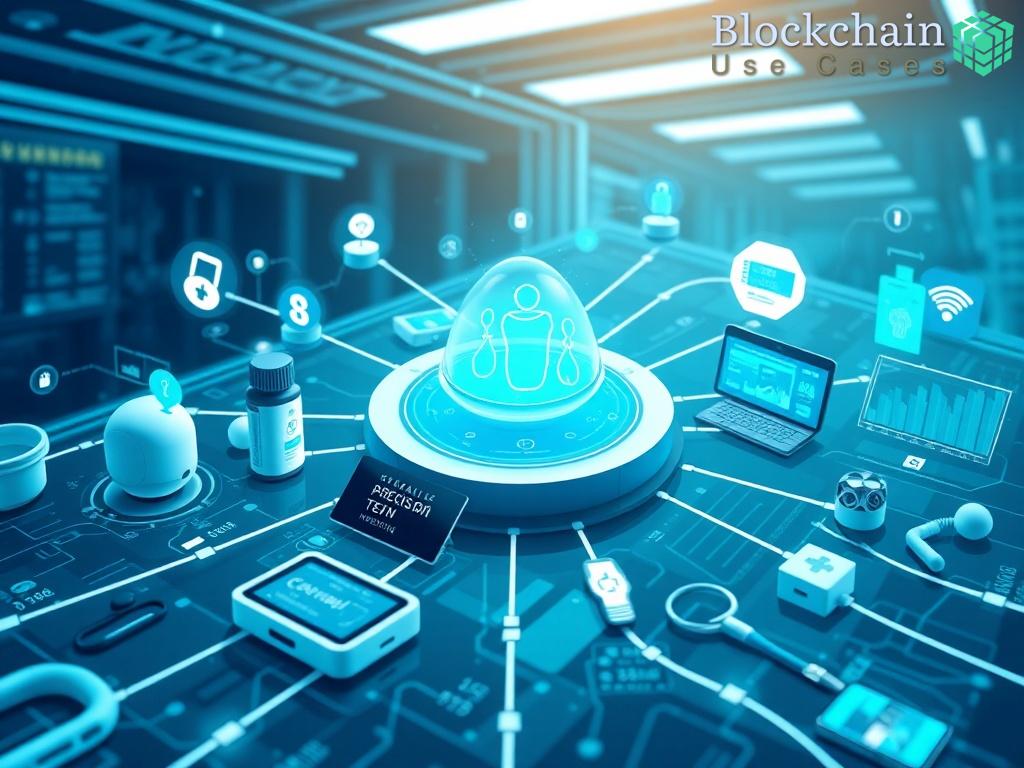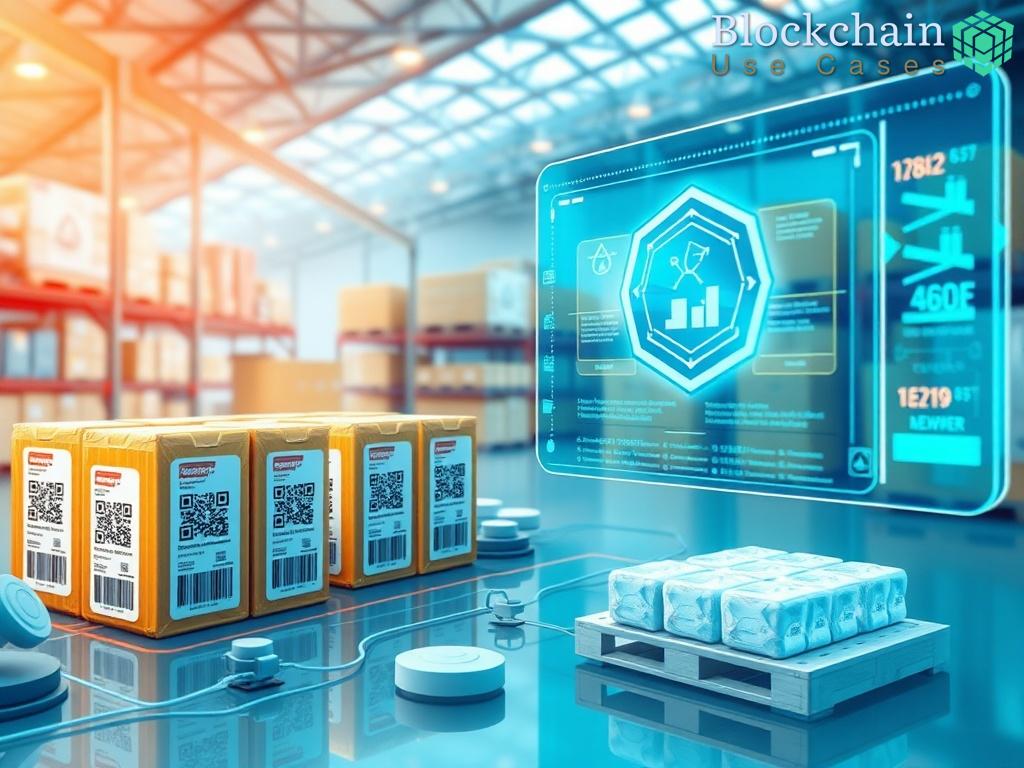Overview of Blockchain Technology in IoT
Unveiling the Synergy between Blockchain and IoT
The rapid proliferation of Internet of Things (IoT) devices is transforming how we interact with technology in our daily lives. However, the security and management of the vast amounts of data generated by these devices pose significant challenges. This is where blockchain technology steps in, providing a secure and decentralized framework to manage IoT data effectively. The seamless integration of blockchain with IoT not only enhances security but also improves transparency, trust, and efficiency in data exchanges.
Key Advantages of Integrating Blockchain with IoT
Combining blockchain and IoT yields a plethora of benefits that address the inherent vulnerabilities associated with centralized data management. Below is a list of key advantages:
- Enhanced Security: Blockchain’s cryptographic features protect data from unauthorized access and tampering.
- Decentralization: Eliminates single points of failure, reducing the risk of systemic failures and attacks.
- Improved Transparency: Every transaction is recorded on a public ledger, fostering accountability.
- Autonomous Operations: Smart contracts enable automated processes, reducing human intervention and errors.
- Data Integrity: Immutable records ensure that the data remains unchanged and trustworthy.
Real-world Applications of Blockchain in IoT
As industries continue to explore innovative solutions, the integration of blockchain in IoT applications is gaining traction across various sectors. Some notable use cases include:
| Industry | Application | Benefits |
|---|---|---|
| Healthcare | Secure patient data management | Protection against data breaches, improved patient privacy |
| Smart Homes | IoT appliance security | Enhanced security protocols for connected devices |
| Supply Chain | Tracking and verifying shipments | Increased transparency, reduced fraud |
| Energy | Decentralized energy trading | Empowers consumers, enhances energy efficiency |
These applications illustrate the transformative impact of blockchain technology on IoT, paving the way for a more secure and efficient digital future.
Enhancing Data Privacy through Blockchain

As the landscape of smart appliances continues to evolve, the need for robust data privacy measures becomes increasingly paramount. Smart devices collect a wealth of information, often including sensitive personal data. This surge in data generation raises concerns about who has access to this information and how it is safeguarded. In the quest for solutions, blockchain technology emerges as a formidable ally, offering a decentralized mechanism that not only protects user data but also reinstates trust in smart appliance ecosystems.
One of the primary advantages of utilizing blockchain for data privacy in IoT devices is the inherent encryption capabilities. Each transaction or data exchange is protected by cryptographic algorithms, ensuring that unauthorized parties cannot easily access or manipulate sensitive information. This encryption serves as a formidable barrier against data breaches, reinforcing the notion that user data remains confidential and secure. Moreover, the decentralized nature of blockchain means that no single entity has control over the data, further minimizing the risk of mass data exploitation.
Another significant aspect of blockchain technology is its ability to enhance user control over personal data. Through the use of private keys, individuals can dictate who has access to their information and for what purpose. This level of control is critical in a world where data is often commoditized without user consent. In the context of smart appliances, users can grant access to their data selectively, ensuring that only trusted parties are privy to their information. This empowerment cultivates a greater sense of ownership and security, allowing users to navigate the digital landscape with confidence.
Furthermore, blockchain’s immutable nature plays a crucial role in ensuring data integrity. Once data is recorded on the blockchain, it cannot be altered or deleted, providing a permanent and verifiable record of all transactions. This attribute is especially vital in scenarios where data accuracy is paramount, such as in health monitoring devices or security systems. With blockchain, users can rest assured that their data reflects an accurate history of interactions, reinforcing trust in the functionality of their smart appliances.
In conclusion, the integration of blockchain technology in the management of IoT-enabled smart appliance data significantly enhances data privacy. By leveraging encryption, enabling user control, and ensuring data integrity, blockchain not only addresses the pressing privacy concerns associated with smart devices but also fosters a more secure and trustworthy environment for consumers. As the adoption of smart appliances continues to rise, the role of blockchain in safeguarding data privacy will undoubtedly become increasingly vital.
Smart Contracts for Automated Device Management
The integration of blockchain technology into the realm of IoT has opened new avenues for enhancing the functionality of smart appliances. One of the most compelling innovations is the implementation of smart contracts, which serve as self-executing agreements programmed to facilitate, verify, or enforce the negotiation or performance of a contract. With the rise of interconnected devices in homes and businesses, the ability to automate operations through smart contracts is not just a convenience; it is a transformative approach to device management.
Smart contracts leverage the decentralized nature of blockchain to create a trustless environment where devices can interact without requiring human intervention. This automation minimizes the potential for error, boosts efficiency, and significantly reduces operational costs. For instance, a smart refrigerator equipped with a smart contract can autonomously reorder groceries when supplies run low, ensuring that users never run out of essentials. This level of automation not only enhances user experience but also streamlines supply chain processes, making them more responsive to real-time needs.
Furthermore, smart contracts can be programmed to execute specific actions based on predefined conditions. For example, a smart thermostat can adjust heating or cooling settings automatically based on user preferences or ambient temperature readings. This capability underscores the potential of smart contracts to optimize energy consumption, promoting sustainability and reducing utility bills. By ensuring that devices operate under optimal conditions, smart contracts contribute to a more energy-efficient ecosystem.
Another remarkable aspect of smart contracts is their ability to facilitate seamless interactions between multiple devices. Consider a scenario where a security system, smart locks, and lighting controls work in concert. Through smart contracts, these devices can communicate with each other to activate security protocols automatically when an unauthorized entry is detected. This interconnectedness not only bolsters security but also enhances the overall functionality of smart homes, creating a cohesive environment where devices respond intuitively to various situations.
In addition to operational efficiencies, the security features inherent in blockchain technology further enhance smart contract functionality. Each contract is stored on an immutable ledger, ensuring that once established, the terms cannot be altered or tampered with. This level of security is crucial in maintaining the integrity of automated processes, providing users with the confidence that their devices will perform as intended without the risk of malicious interference.
As we advance into an era where IoT devices are becoming increasingly commonplace, the role of smart contracts in managing these devices will undoubtedly expand. By harnessing blockchain technology, we can foresee a future where smart appliances not only operate autonomously but do so in a secure, efficient, and user-friendly manner. The fusion of blockchain and smart contracts will redefine the landscape of IoT, setting new standards for what consumers can expect from their smart devices.
Challenges in Implementing Blockchain Solutions
As the integration of blockchain technology with IoT-enabled smart appliances continues to gain momentum, the journey toward widespread adoption is not without its complications. Although the potential benefits are immense, several challenges must be addressed to ensure successful implementation. Understanding these obstacles is crucial for stakeholders aiming to leverage this innovative technology for enhanced security and management of data.
Scalability Concerns in a Connected World
One of the foremost challenges in implementing blockchain solutions for IoT applications is the scalability issue. With billions of devices expected to be connected in the near future, the sheer volume of data generated can overwhelm traditional blockchain networks. The current infrastructure may struggle to process the enormous amount of transactions in real-time, leading to latency and inefficiencies. Moreover, the need for lightning-fast processing speeds is paramount in an ecosystem where instant data exchange is the norm. To address this, developers are exploring various solutions such as layer-2 protocols and sharding, which aim to enhance the throughput of blockchain networks while maintaining the integrity and security of the data.
Interoperability Challenges Across Platforms
As diverse IoT devices from different manufacturers enter the market, ensuring interoperability among various blockchain protocols becomes a pressing issue. The lack of standardization means that individual ecosystems may operate in silos, limiting the potential for seamless data sharing and collaboration. This fragmentation hinders the overall effectiveness of blockchain solutions in IoT applications. To overcome these barriers, industry stakeholders must work together to establish common protocols and frameworks that enable devices to communicate effectively across different platforms. Initiatives aimed at promoting interoperability will not only enhance operational efficiency but also foster innovation through collaborative efforts.
Regulatory and Compliance Issues
The regulatory landscape surrounding blockchain technology and IoT is still evolving, presenting further challenges for implementation. Organizations must navigate a myriad of regulatory compliance requirements related to data privacy, security, and usage. As governments introduce new laws and guidelines, businesses must ensure their blockchain solutions align with these regulations to avoid potential legal repercussions. This requires a proactive approach in understanding and adapting to the regulatory environment, which can be complex and dynamic. Engaging with policymakers and participating in industry groups can facilitate a smoother transition into compliant blockchain practices.
Future Trends in Blockchain and IoT Integration
The Evolution of Decentralized Ecosystems
As we look towards the future, the integration of blockchain and IoT is poised to evolve into a more sophisticated ecosystem that embraces decentralization. This shift is not merely a technological advancement; it reflects an increasing demand for user-centric solutions where individuals have greater control over their data. The rise of decentralized identity solutions will empower users to manage their digital identities securely, allowing for selective sharing of personal information with IoT devices. The implications of such advancements are profound, as they promise to enhance privacy and security in a rapidly digitalizing world.
AI and Machine Learning Synergy with Blockchain
Another exciting trend on the horizon is the convergence of artificial intelligence (AI) and machine learning with blockchain technology. This amalgamation will enable IoT devices to learn from data patterns, optimizing their performance while ensuring that the data remains secure and tamper-proof. For instance, smart appliances could leverage AI to predict user preferences and adjust their functionality accordingly. With blockchain ensuring the authenticity of the data collected, users can trust that the insights generated by these smart devices are reliable and actionable. The continuous feedback loop created through this synergy promises to enhance user experiences significantly.
Enhanced Interoperability through Standardization
The future landscape will likely see a push towards enhanced interoperability among IoT devices, driven by the establishment of standardized protocols. As various industries adopt blockchain solutions, the need for devices to communicate seamlessly will become imperative. This standardization will not only facilitate smoother interactions among devices but also promote innovation across sectors. When manufacturers adopt common frameworks, the potential for cross-industry collaboration expands, leading to the development of more integrated and efficient smart ecosystems. Ultimately, this trend holds the promise of creating a cohesive environment where devices work harmoniously, amplifying their collective capabilities.





